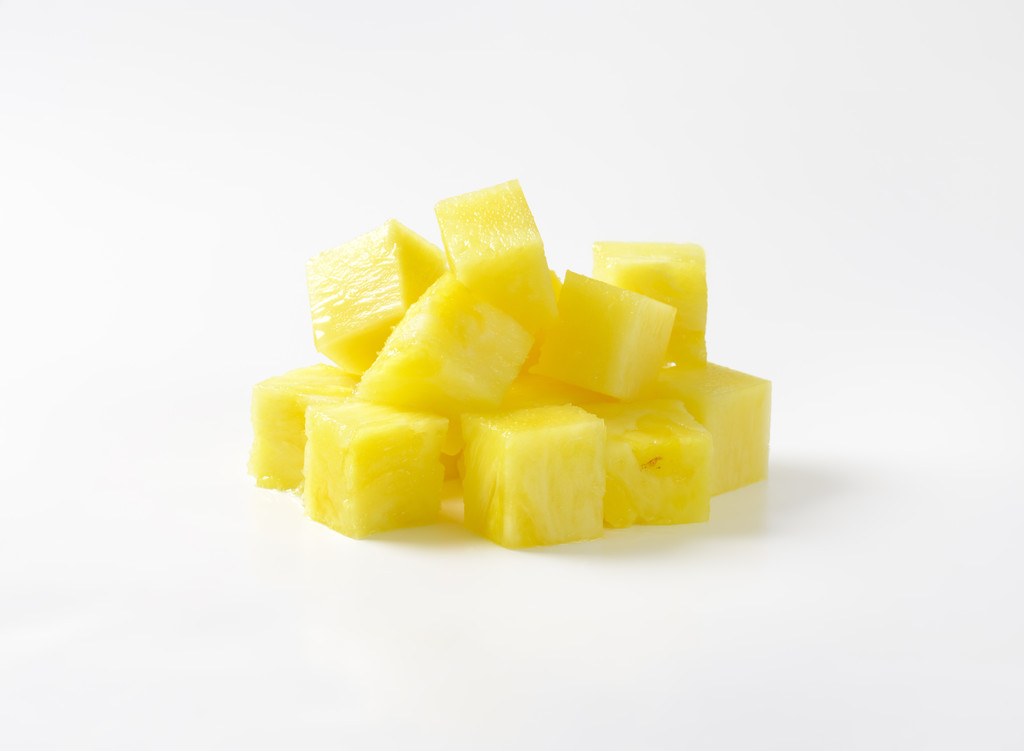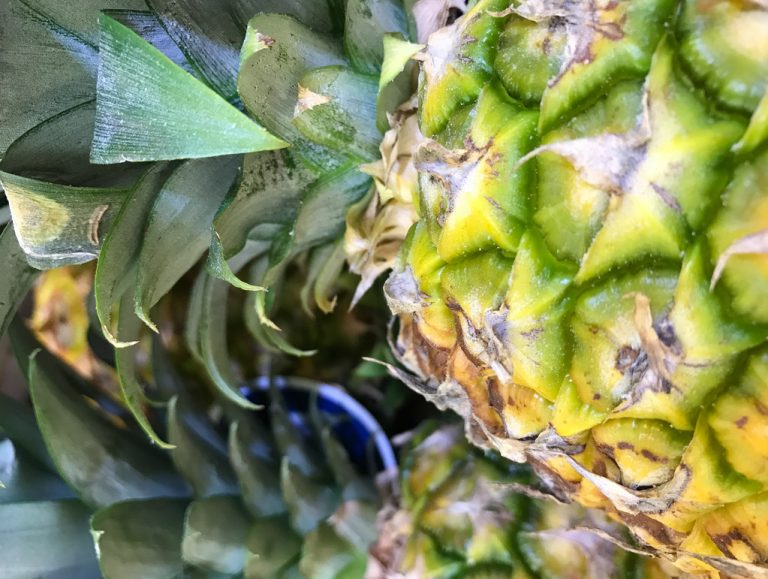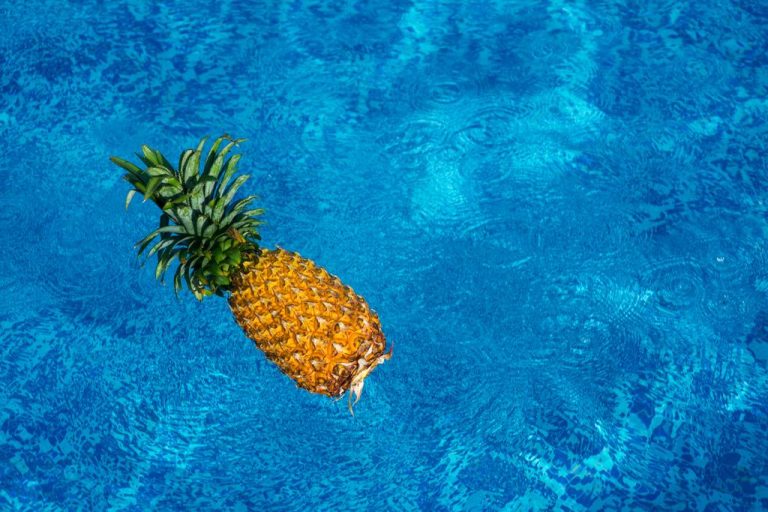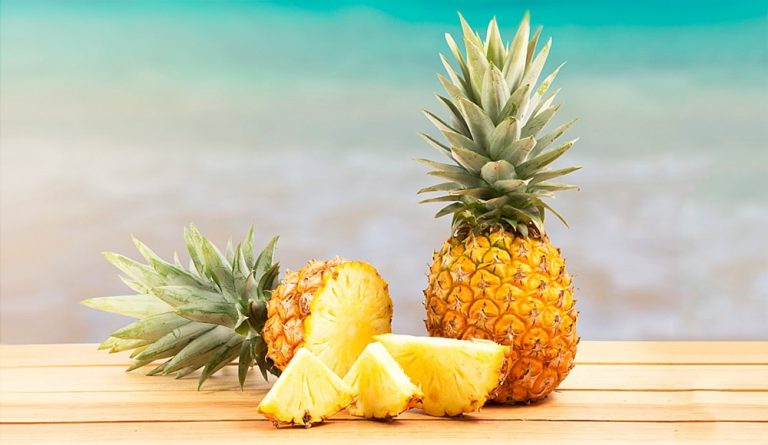Prickly leaves, brown-yellow skin, yellow, sweet flesh – for many, the pineapple is the epitome of exotic tropical fruit. In fruit salad, on pizza, as dried fruit or fresh, it has enriched our menu for many years. But what many do not know: their cultivation is problematic.
The pineapple not only tastes good, but due to its valuable ingredients it is said to be particularly healthy, help you lose weight and even fight cancer. But is everything that is said about the pineapple really true? And what about the tropical fruit in terms of sustainability and eco-balance? We have subjected the superfood classic to a close check – and discovered some less pleasant facts.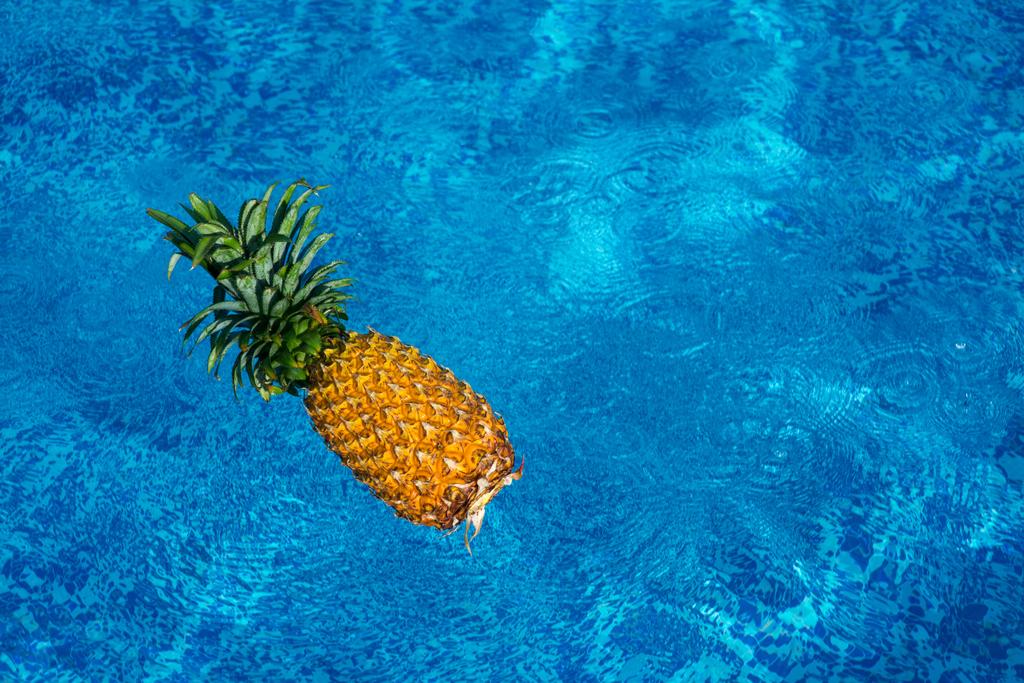
Interesting facts about the pineapple plant
The herbaceous perennial pineapple plant, Latin name ananas comosus, belongs to the bromeliad family. It was originally native to Central America and the Caribbean – the term “pineapple” was derived from the language of the Guarani Indians. Today, however, the fruit is grown in all tropical regions worldwide.
In the center of the plant is a stake stem that is partially buried in the ground and serves as an anchor. At the top of this stem, a flower stalk with many small individual flowers forms every year. The pineapple ripens from the infructescence (flower stalk) after three to four months. The tropical fruit therefore also consists of many fruits fused together, which is reflected in the structure of the peel. Edible pineapple fruits are sterile and contain no seeds, the plants propagate via side shoots.
The pineapple has very few and small roots, it gets water and nutrients from the rainwater. This allows it to grow on almost any substrate, but when cultivated in plantations it is heavily fertilized so that it produces large fruits. The pineapple is usually harvested unripe and with the inedible, prickly leaf crown; it ripens during transport or storage. Ripe fruits can be recognized by their aromatic smell or by the fact that the skin gives a little when you press them with your finger.
Ingredients and calories of pineapple
The tropical fruit can come up with some valuable ingredients. The first thing to mention is the high vitamin C content, which supports our immune system, especially during the main pineapple season, in winter. There are also minerals such as potassium, magnesium, calcium and phosphorus. Because the exotic fruit consists of 85 percent water, it is almost fat-free; their calories come from their fructose. However, the sweet taste is only very moderate at 59 kcal per 100 grams.
How healthy is pineapple actually?
The short answer is that pineapples are generally very healthy. The exotic fruit is low in calories, but contains vitamin C and minerals that make it a healthy snack between meals. But the tropical fruit is also ideal for spicing up various sweet and savory dishes.
In addition, the pineapple brings along secondary plant substances and active ingredients such as enzymes that have a positive effect on the metabolism, the psyche and health. For example, the tropical fruit promotes digestion and stimulates the immune system. Even the canned fruits still contain a relatively large amount of these healthy components. This is even more true for pineapple juice, as long as it’s freshly squeezed and not loaded with preservatives.
Things are a bit different with dried fruit. Due to the dehydration, they are very high in sugar and therefore high in calories. How many of the healthy ingredients are lost in the drying process cannot be said exactly. The same applies to pineapple capsules, pineapple extract or powder. Therefore, you should always reach for fresh fruit if you want to do something good for yourself.
The active ingredients of pineapple: enzyme, salicylates and phytosterols
The tropical fruit is said to have many positive effects. She should …
help you lose weight by burning fat,
strengthen the immune system,
help as an anti-cancer agent,
act against inflammation and swelling as well as blood thinning,
be aphrodisiac
and brighten the general mood.
Various active ingredients in the fruit are responsible for this, above all the enzyme bromelain. Bromelain is actually a mixture of several proteases that occur naturally in the human body as digestive enzymes and break down protein. Clinical studies have shown that bromelain is actually effective against swelling and edema, such as after surgery. In addition, a blood-thinning and anti-inflammatory effect of the enzyme could also be proven in studies without any doubt. To date, there have been only promising test-tube experiments or case studies to cure cancer with bromelain. (2012 meta-study) Pineapple also contains salicylates (including the active ingredient in aspirin), which support the enzyme’s anti-inflammatory and blood-thinning effects.
And when it comes to mood lifting, study results also suggest positive things to come from the tropical fruit. Pineapple contains phytosterols such as serotonin and melatonin, which are also found in antidepressants. In addition, pineapple also seems to strengthen the body’s own antioxidants – but further research is needed here as well.
Cut and peel pineapple properly
The tropical fruit has its pitfalls: the prickly leaves and the rough skin and the “core” act as a deterrent at first. But instead of reaching for the canned pineapple right away, try our instructions on how to peel and cut pineapple correctly.
First you cut off the crown of the leaf and the bottom of the fruit from the ripe pineapple. Then you stand the fruit upright on a work surface and cut off the skin from top to bottom all around. You should also remove the deeper, hard “eyes”. Now you can either slice the fruit lengthwise, leaving the stalk in the middle. Or cut through round discs from which you then remove the hard center piece.

